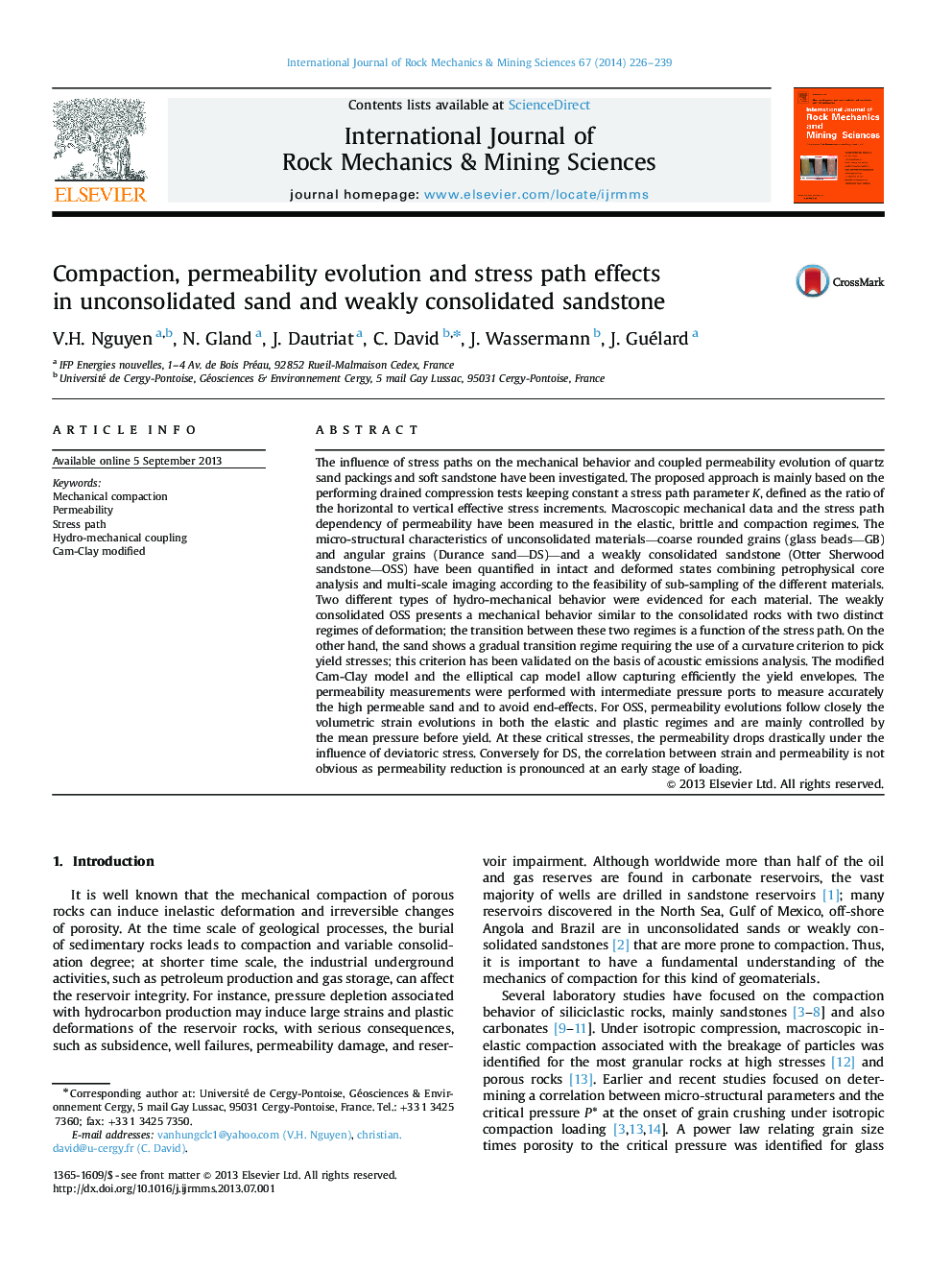| Article ID | Journal | Published Year | Pages | File Type |
|---|---|---|---|---|
| 809607 | International Journal of Rock Mechanics and Mining Sciences | 2014 | 14 Pages |
•Significant experimental campaign is required to fully describe the complex hydro-mechanical behavior.•Sand and weakly consolidated sandstone showed a very different hydro-mechanical behavior.•Strain and permeability showed the same evolutions for weakly consolidated sandstone, but not for sand.•For sand, the yield stress determination required a specific criterion validated by AE analysis.•Plastic yielding is controlled by conventional elliptical cap models for both the materials.
The influence of stress paths on the mechanical behavior and coupled permeability evolution of quartz sand packings and soft sandstone have been investigated. The proposed approach is mainly based on the performing drained compression tests keeping constant a stress path parameter K, defined as the ratio of the horizontal to vertical effective stress increments. Macroscopic mechanical data and the stress path dependency of permeability have been measured in the elastic, brittle and compaction regimes. The micro-structural characteristics of unconsolidated materials—coarse rounded grains (glass beads—GB) and angular grains (Durance sand—DS)—and a weakly consolidated sandstone (Otter Sherwood sandstone—OSS) have been quantified in intact and deformed states combining petrophysical core analysis and multi-scale imaging according to the feasibility of sub-sampling of the different materials. Two different types of hydro-mechanical behavior were evidenced for each material. The weakly consolidated OSS presents a mechanical behavior similar to the consolidated rocks with two distinct regimes of deformation; the transition between these two regimes is a function of the stress path. On the other hand, the sand shows a gradual transition regime requiring the use of a curvature criterion to pick yield stresses; this criterion has been validated on the basis of acoustic emissions analysis. The modified Cam-Clay model and the elliptical cap model allow capturing efficiently the yield envelopes. The permeability measurements were performed with intermediate pressure ports to measure accurately the high permeable sand and to avoid end-effects. For OSS, permeability evolutions follow closely the volumetric strain evolutions in both the elastic and plastic regimes and are mainly controlled by the mean pressure before yield. At these critical stresses, the permeability drops drastically under the influence of deviatoric stress. Conversely for DS, the correlation between strain and permeability is not obvious as permeability reduction is pronounced at an early stage of loading.
